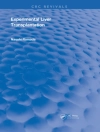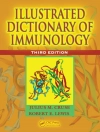The complex, highly technological field of neurovascular surgery is quickly expanding, encompassing traditional surgical approaches, as well as endovascular and neurointerventional techniques. The last decade has seen increased cross-specialty interest in utilizing minimally invasive techniques to help prevent and treat cerebrovascular disease. Concurrently, there has been important research analyzing the efficacy of surgical methods versus endovascular approaches – and the clip versus coil discussion is covered herein.
Written by 21st Century pioneers in the field, this second, cutting-edge edition offers the latest science throughout 1, 400 pages – and a remarkable video library – covering anatomy, diagnosis, epidemiology, history, treatment indications, technical nuances, outcomes, and complications. Internationally renowned experts from across the globe share clinical pearls and best practices, from the research lab to the ER to the OR.
Medical, surgical, endovascular, cerebral revascularization, bypass surgery, radiation therapy, and other procedures are covered in depth. Evidence-based and transdisciplinary, the second edition covers the full spectrum of neurovascular pathologies, preoperatively and postoperatively, including:
- Ischemic Stroke and Vascular Insufficiency
- Cerebral and Spinal Aneurysms
- Cerebral and Spinal Arteriovenous Fistulae and Malformations
- Vascular Tumors
- Carotid Artery Disease
- Moya-Moya Disease
- Revascularization techniques
Organized into 11 primary sections, 99 richly illustrated chapters, and more than 140 videos, this volume is an invaluable, one-stop reference tool. It is a must-have for general, vascular and endovascular neurosurgeons; interventional radiologists; neurologists; critical care practitioners; and neuro-rehabilitation specialists.
İçerik tablosu
<p><strong>Part I Development, Anatomy, and Physiology of the Central Nervous System</strong><br>1 Development of the Cerebrovasculature<br>2 Microsurgical Anatomy of the Internal Carotid and Vertebral Arteries<br>3 Cranial Vascular Anatomy of the Anterior Circulation<br>4 Cranial Vascular Anatomy of the Posterior Circulation<br>5 Cranial Venous Anatomy<br>6 Spinal Vascular Anatomy<br>7 Cerebrovascular Physiology<br><strong>Section II Evaluation and Treatment Considerations for Neurovascular Disease</strong><br>8 Neurovascular History and Examination<br>9 Intraoperative Evaluation of Blood Flow<br>10 Neuroanesthesia<br>11 Neuromonitoring<br>12 Cerebral Protection<br>13 Principles and Techniques of Hypothermia and Cardiac Arrest for Neurovascular Anomalies<br>14 Invasive and Noninvasive Imaging of the Vasculature<br>15 Applications of Indocyanine Green Video Angiography in Neurovascular Surgery<br><strong>Section III Ischemic Stroke and Vascular Insufficiency</strong><br>16 The Pathophysiology of Cerebral Ischemia<br>17 Medical Management of Cardiogenic Cerebral Embolism<br>18 Diagnosis of Brain Infarction<br>19 Carotid Disease<br>20 Carotid Endarterectomy<br>21 Endovascular Treatment of Carotid Stenosis<br>22 Medical Management of Vertebrobasilar Occlusive Disease<br>23 Surgical Treatment of Vertebrobasilar Insufficiency<br>24 Endovascular Treatment of Vertebrobasilar Insufficiency<br>25 Medical Management of Intracranial Athero-Occlusive Disease<br>26 Medical Management and Thrombolytic Therapy for Acute Ischemic Stroke<br>27 Current Endovascular Treatment of Acute Ischemic Stroke<br>28 Pathophysiology and Surgical Management of Intracerebral Hematomas<br>29 Medical and Endovascular Treatment of Cerebral Sinus and Venous Thrombosis<br>30 Spinal Cord Infarction<br>31 Medical, Surgical, and Endovascular Treatment of Claudication<br>32 Medical, Surgical, and Endovascular Treatment of Arterial Injury<br>33 Pituitary Apoplexy<br><strong>Section IV Cerebral and Spinal Cavernous Malformations</strong><br>34 Cavernous Malformations: Natural History, Epidemiology, Presentation, and Treatment Options<br>35 Surgical Management of Supratentorial Cavernous Malformations<br>36 Surgery for Brainstem Cavernous Malformations<br>37 Microsurgery of Intramedullary Spinal Cavernous Malformations<br><strong>Section V Cerebral and Spinal Aneurysms</strong><br>38 Intracranial Aneurysms<br>39 Subarachnoid Hemorrhage<br>40 Cerebral Vasospasm and Delayed Ischemic Complications Associated with Subarachnoid Hemorrhage<br>41 Medical Management of Subarachnoid Hemorrhage<br>42 Endovascular Management of Subarachnoid Hemorrhage<br>43 Surgical Therapies for Saccular Aneurysms of the Internal Carotid Artery<br>44 Endovascular Therapies for Aneurysms of the Internal Carotid Artery<br>45 Management Strategies for Intracavernous Aneurysms<br>46 Surgical Therapies for Carotid-Ophthalmic Aneurysms<br>47 Endovascular Treatment of Carotid-Ophthalmic Aneurysms<br>48 Surgical Therapies for Middle Cerebral Artery Aneurysms<br>49 Endovascular Therapies for Middle Cerebral Artery Aneurysms<br>50 Surgical Therapies for Anterior Communicating Artery Aneurysms<br>51 Endovascular Therapies for Anterior Communicating Artery Aneurysms<br>52 Surgical Therapies for Distal Anterior Cerebral Artery Aneurysms<br>53 Comprehensive Management of Distal Anterior Cerebral Artery Aneurysms<br>54 Surgical Therapies for Basilar Artery Aneurysms<br>55 Endovascular Therapies for Basilar Artery Aneurysms<br>56 Surgical Therapies for Vertebral Artery and Posterior Inferior Cerebellar Artery Aneurysms<br>57 Microsurgical Management of Aneurysms of the Posterior Cerebral, Superior Cerebellar, and Anterior Inferior Cerebellar Arteries<br>58 Endovascular Treatment of Vertebrobasilar Circulation Aneurysms<br>59 Infectious Intracranial Aneurysms<br>60 Traumatic and Dissecting Intracranial Aneurysms<br>61 Giant Aneurysms<br>62 Incidental Aneurysms<br>63 Flow-Diverting Stents in the Management of Complex Aneurysms<br>64 Aneurysms of Spinal Arteries<br>65 Cerebral Aneurysms: To Clip or Coil?<br><strong>VI Cerebral and Spinal Arteriovenous Fistulas and Malformations</strong><br>66 Cerebral Arteriovenous Malformations<br>67 Vascular Malformations and Epilepsy<br>68 Cranial Dural Arteriovenous Fistulas<br>69 Endovascular Treatment of Cerebral Arteriovenous Malformations<br>70 Supratentorial Arteriovenous Malformations<br>71 Posterior Fossa Arteriovenous Malformations and Dural Arteriovenous Fistulas<br>72 Giant Arteriovenous Malformations<br>73 Microsurgical Treatment of Vein of Galen Malformations<br>74 Endovascular Treatment of Vein of Galen Malformations<br>75 Presentation, Clinical Features, and Natural History of Carotid-Cavernous Sinus Fistulas<br>76 Endovascular Treatment for Carotid-Cavernous Sinus Fistulas<br>77 Endovascular Management of Intracranial Fistulas<br>78 Stereotactic Radiosurgery for Cranial Vascular Malformations<br>79 Radiosurgery for Spinal Arteriovenous Malformations<br>80 Surgical Management of Spinal Vascular Malformations<br>81 Endovascular Treatment of Spinal Arteriovenous Malformations<br><strong>Section VII Disorders of Ephaptic Transmission</strong><br>82 Trigeminal and Glossopharyngeal Neuralgia<br>83 Microvascular Decompression for Trigeminal Neuralgia: Operative Results in 2, 488 Cases<br>84 Surgical Management of Hemifacial Spasm<br><strong>VIII Vascular Considerations in the Management of Tumors</strong><br>85 Embolization of Vascular Tumors<br>86 Microsurgical Management of Vascular Tumors<br>87 Microsurgical Management of Vascular Spinal Tumors<br><strong>IX Surgical Approaches</strong><br>88 Skull Base Approaches to the Anterior and Middle Cranial Fossa<br>89 Surgical Approaches to the Posterior Fossa<br>90 Applications of Endoscopy to Cerebrovascular Surgery<br>91 Keyhole Cranial Approaches for Cerebrovascular Surgery<br>92 Surgical Exposure of the Vertebral Artery<br><strong>Section X Cerebral Revascularization</strong><br>93 Bypass Surgery for Aneurysms and Tumors<br>94 Excimer Laser-Assisted Nonocclusive Anastomosis<br>95 Intracranial–Extracranial Bypass Surgery for Moyamoya Disease<br>96 Intracranial–Intracranial Bypass Surgery<br>97 Surgical Cerebral Revascularization for Ischemia<br>98 Posterior Circulation Bypass Surgery<br>99 Endovascular Cerebral Revascularization</p>












